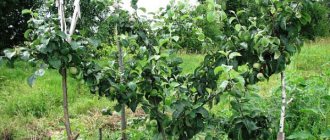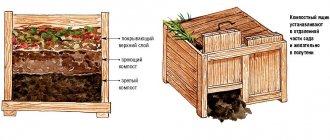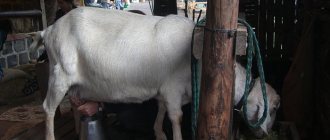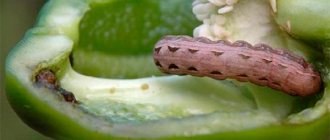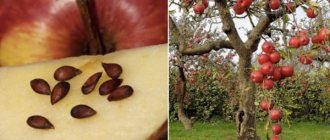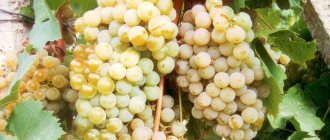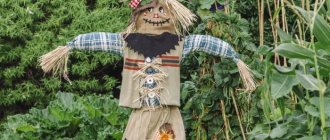As you can guess from the name, ezhemalina is a hybrid of raspberries and blackberries, which combines the properties of these berry plants. In some varieties of blackberries, the characteristics of blackberries predominate, in others - raspberries.
Thanks to the efforts of breeders, it was possible to obtain an unpretentious, high-yielding crop that is resistant to drought and frost.
An adult plant with long flexible stems and large berries collected in clusters, looks more like a blackberry.
Compared to raspberries, hybrids produce good yields.
Latest articles about gardening
Indoor cacti photos and names
Clematis: preparing for winter in the Urals
Calla lilies care, cultivation, storage
Types of raspberries
Boysenberry - this variety is one of the best among the raspberries. This hybrid of raspberries and blackberries is a fairly new variety, the berries of which have an amazing aroma and taste, superior to both raspberries and blackberries. Initially, this hybrid was prickly, with a powerful bush. Nowadays, thornless plants are being bred, but the size and yield of these species is less than that of thorny crops. Boysenberry raspberry begins to bear fruit at the end of July and continues until the end of August.
Ezhemalina variety Darrow is a bush up to three meters high, with strong, straight-growing, prickly stems. The variety has decorative finger-shaped leaves. The berries are small - up to 4 g in weight, when ripe they are almost black, glossy, elongated in shape. The variety is tall and the shoots are long, so that under the weight of leaves and berries, and the variety’s yield is high, the stems do not break, they need a garter.
Ezhemalina Loganberry, as stated in the description of the variety, is one of the most famous raspberry-blackberry hybrids bred in the USA. The hybrid is distinguished by a creeping bush; shoots can be with or without thorns. In the Thornless Loganberry variety, the stems and petioles of the foliage, as well as the foliage itself, are covered with soft hair.
The Tayberry raspberry variety is distinguished by long, creeping burgundy-colored shoots with small thorns. Flowering begins in July, and berries ripen in the second half of August. On hanging clusters there are up to six almost burgundy, elongated berries. The taste of the berries is similar to raspberry, and the pleasant aroma is reminiscent of candy. The Tayberry raspberry variety has good yield indicators - 5 kg per bush.
Useful qualities
The new subspecies of the berry did not captivate gardeners with its exquisite taste (the berry turned out to be sour in taste), but it absorbed the maximum benefits of two progenitor berries in the form of a vitamin bouquet: A, beta-carotene, E and K, C, B1, B2, B3 ( PP), B4, B5, B6 and B9.
The berry is low in calories. Contains fats, proteins, carbohydrates and a high ratio of minerals: calcium, magnesium, copper, iron, zinc, sodium, potassium, manganese, selenium, phosphorus.
The beneficial composition of the raspberry inspired breeders to develop new varieties in order to preserve the benefits of the berry, but at the same time improve its taste.
This is how new varieties of Ezhemalina appeared:
- Boysenberry;
- Texas;
- Tayberry;
- Darrow;
- Silvan;
- Medana;
- Marion;
- Red Diamond;
- Thornless;
- Cumberland.
In terms of color, there are varietal black, yellow and red raspberries with different color saturation and shade.
Choosing a location and planting raspberries
The place for the raspberries should be sunny and windless. If the bushes grow in the shade, they will quickly begin to wither, and the harvest will be much worse. The soil must be fertile and aerated so that moisture does not stagnate.
Latest articles about gardening
How to deal with shrews in the garden?
Hydrangea photo garden planting and care
Hibiscus: planting and care in open ground
The best time to plant a hybrid is the end of September - the beginning of October; in the southern regions the timing is extended until the end of October. Dig holes for seedlings the same as for raspberries (40/40/40). The distance between the bushes should be about a meter.
Landing
This unpretentious plant loves the sun, like raspberries and blackberries. Bushes should be planted at a distance of 80-100 cm between bushes and 120-150 cm between rows. When the bush grows, it is tied to a trellis.
Ezhemalina is unpretentious to the soil. Standard requirements are the absence of stagnant groundwater, so that the roots do not rot and moderate fertility. In spring you can feed with nitrogen fertilizers.
Additionally, you can feed the plant with herbal infusions. Mulch, as for related crops, can be from mown grass, straw, or wood shavings.
Raspberry care
Ezhemalina is an unpretentious shrub. Caring for her is not difficult, you just need to create normal conditions for her growth and development.
Mulching. In order not to complicate your life with frequent watering and weeding, you need to pour mulch under the roots of the bush. Mulching is done from any available material. The first layer is cardboard or several layers of newsprint, and on top there is sawdust, ash, weeded weeds, and manure. To protect the raspberries from weeds, you need to lay out a layer of mulch of at least 10 centimeters. The cardboard will decompose, and the substances on top of it will turn into humus and release all the useful elements to the soil. In the spring, mulching will need to be done again.
Tying. If you don't want the plant to spread throughout the garden, use trellises. Supports in the form of stakes are not suitable for the bush, since when tied to them, the berries become smaller in size every year, and the bush itself spreads to the sides. Trellis help keep it in its normal form. The minimum number of rows is five; the bottom row of wire secures the lower shoots. The topmost branches are tied to the top row.
Trimming . Ezhemalina is a plant that needs regular pruning. The best time to prune raspberries is late autumn, when the plant has already stopped bearing fruit, but you need to do it before the first frosts, since after them the branches will not be cut, but broken. You need to remove excess shoots, broken and dried branches. You can start pruning raspberries in early spring, when sap flow has not yet begun. As soon as the snow melts, you need to remove old branches and shoots that have frozen over the winter. It is also necessary to pinch the tops of the bushes.
Feeding. Any plants in the garden need feeding, and raspberries are no exception. Fertilizers are selected depending on the composition of the soil, but the most necessary element for raspberries is nitrogen. That is why it is useful to fertilize with suitable types of nitrogen fertilizers, as well as diluted nettle infusion or manure diluted with water.
Seasonal features
When the frosts have subsided, the first step is to do sanitary treatment: cut off all branches deformed after winter. If necessary, similar work is carried out in the summer. The stems must be shortened to increase the yield of berries and prevent nutrients from escaping into shoot growth.
Caring for raspberries in the fall requires no less attention. After all the stems have fruited, they must be removed. Thus, the plant will damage fewer shoots in winter and give all its strength to healthy stems in the spring.
It is necessary to have a good understanding of how to care for raspberries in the fall. The shrub grows quite quickly and spreads across the site, so it is recommended to tie it to a support: this will not only contribute to convenience during harvesting, but also the berries will receive the necessary amount of air and sunlight during the ripening process. In this regard, autumn raspberry care is extremely necessary.
Autumn care for raspberries
In autumn, prevention against various diseases is carried out. To do this, the raspberry bushes are treated with special solutions. You can use a decoction of nettle or horsetail. If pests are detected, the plant must be treated with fungicides.
Ezhemalina of any variety shows fairly good resistance to most diseases.
Before the start of winter, the raspberries must be laid on the ground. To do this, the shoots are removed from the trellis and fixed in a lying position. If there is sufficient rainfall, snow can be used for shelter. If the winter is snowless, sawdust, pine branches or special covering material with good breathability functions are suitable for covering.
Latest articles about gardening
Radish planting before winter
Rhododendrons in the Urals care and planting
Climbing rose: planting and care in open ground, photo
Pruning regular raspberries in autumn
If your raspberries produced one harvest in mid-summer, then they are regular (summer) varieties. These raspberries bear fruit on last year’s shoots and need to be pruned taking this fact into account.
Step 1
Carefully inspect the bush, rake dry leaves, old mulch, and excess grass from the base.
Step 2
Cut off fruit-bearing branches close to the ground. They are easily identified by their dark color, flaky bark and dryness. Branches that have already yielded their harvest easily break because they have already begun to dry out.
Step 3
Remove thin grassy shoots from the bush. They will not survive the winter and will only take away excess strength from the plant.
An adult raspberry bush should have 8-12 branches left, and it is desirable that they do not intertwine, but are located at a short distance from each other.
Step 4
Tie the remaining shoots together and secure them so that they do not break under the load of snow. Treat the base of the bush and the bush itself against pests, and then mulch with fresh plant material. Use all cut branches in the garden or burn them.
Reproduction of raspberries
Bushes are propagated by woody and green cuttings, root cuttings, and root suckers. Seed propagation is possible, but is rarely used, since seedlings do not retain the properties of the variety. Root cuttings are most often used. To do this, in the spring, dig up the roots (the optimal diameter is 5-7 mm) and cut them into pieces 10-15 cm in length. Such material is immediately planted in beds, positioned horizontally.
When should you prune your raspberry every day, in what month?
Pruning of raspberries is carried out in spring, autumn and even summer. The first stage occurs at the end of March - beginning of April, when the bush has not yet begun to grow (the buds have not swollen, that is, before the sap begins to flow). The second period lasts from late May to early June. The last haircut is planned for mid-October. Specific dates should be selected based on the climatic characteristics of the region.
Is it possible to prune raspberries in the fall?
Ezhemalina needs to be pruned in the fall for the winter: it is correct to do this in the first half of October, but definitely not during the period of frost, when the weakened bush may suffer. Approximate timing for different areas:
- middle zone - mid-October;
- southern regions – second ten days of November;
- North-West, Urals - the first ten days of October;
- Siberia, Far East – until October 10.
Attention! In the first year, annual pruning is not carried out in the fall. It is enough to remove damaged shoots in the spring (if any).
The formation of the bush begins no earlier than the second season.
Is it necessary to prune raspberries in spring?
In spring, haircuts are carried out for the following purposes:
- removal of diseased branches is a sanitary measure;
- to stimulate the growth of new shoots - a rejuvenating procedure.
The first stage is planned for early spring. It is necessary to have time before the sap flow:
- middle zone - early April;
- southern regions – mid-March;
- North-West, Urals - first ten days of April;
- Siberia, Far East – April 10–20.
The second stage of pruning is planned for the end of May - the first half of June. At this moment, the long branches are shortened and the bush is formed, leaving seven powerful shoots.
Important! Summer residents sometimes get another haircut at the end of July - the first half of August, i.e. after the entire harvest has been harvested.
Pruning is carried out to rejuvenate the bush. All old shoots are completely removed, even if they produced a harvest this year, and 9–10 powerful branches are left.
Pruning of raspberries is carried out in spring, summer and autumn
Preparing raspberries for winter
In general, ezhemalina is a frost-resistant plant, but this does not mean that it does not need additional procedures that will help strengthen its resistance to winter.
You need to untie the bush shoots from the trellises and lay them along them.
Cover the top of the bushes with fallen leaves, sawdust, peat or straw. This will help protect them from freezing in the cold.
If you live in an area where there is a lot of snow in winter and heavy precipitation, then such coverings with organic matter may not be necessary; snow cover and snowdrifts will replace the cover and warm the plant.
Pruning remontant raspberries in autumn
Gardeners ask the question of how to prune remontant raspberries in the fall only in the first year after planting. The very next season everything becomes extremely clear and simple. If you have just encountered this problem, choose one of two equally successful solutions.
Full pruning of remontant raspberries
To obtain a harvest of remontant raspberries once a year (in late summer - early autumn), the formation of large berries with all varietal characteristics and maintaining the good condition of the bushes, they need to be pruned to zero.
Step 1
Untie the raspberry bush from the support, carefully inspect it, and collect the last berries.
Step 2
Cut absolutely all shoots to ground level, regardless of their thickness, color and condition.
Step 3
Place cut branches at the base of tall beds, use them to cover overwintering perennials, or (if the foliage is infested with insects and diseases) burn them.
Partial pruning of remontant raspberries (for two fruitings)
If you don’t need abundant harvests, but want to pick berries twice in one season, try pruning remontant raspberries a little differently.
Step 1
Inspect the bush, select all fruit-bearing branches. They are easily recognized by their brown color, slightly flaky bark and the remains of berry clusters. Cut them down to the ground.
Step 2
Leave 3-4 green young and fairly strong branches on the bush. They appear in the second half of summer and do not have time to form flower stalks.
Step 3
Tie the remaining branches together, bend them to the ground and leave until frost. With the onset of stable cold weather, mulch the base of the bush and cover the branches with straw, spunbond or spruce branches.
If your region has mild winters and the temperature does not drop below –20°C, there is no need to cover the raspberries; it will be enough to throw snow on the bushes.
Learning to prune raspberries correctly is not at all difficult; just practice once and you will never make a mistake. And remember, raspberries are one of the most actively growing shrubs, so without regular pruning you will end up with thorny thickets with a small number of low-quality berries.
What causes Ezhmalina
Although Ezhmalina is resistant to diseases and pests, you should nevertheless be aware of its “weak” points. The main disease is a white coating on the leaves. It is noticeable immediately upon its appearance and resembles in its appearance a coating on the surface of stale bread. Ezhemalina is affected by anthracnose. Among the pests, raspberries can be “attacked” by weevils, raspberry beetles, and stem galits. Since most of these pests and diseases are characteristic of raspberries, their manifestation is explained by the presence of raspberry genes in raspberries.
Fungicides are used to combat diseases:
- Mikosan;
- Topaz;
- Saprol;
- Speed;
- Strobe;
- Vectra and others. The drugs should be used according to the instructions. Use is limited one month before the expected berry harvest.
Features of pruning black raspberries
Black raspberries, a variety of berries obtained by crossing raspberries and blackberries, are distinguished by their unpretentiousness and enviable frost resistance.
To obtain the highest quality harvest, black raspberries are pruned in two stages. Pruning black raspberries in the fall is not difficult even for beginners, because... the process is similar to the work carried out with red varieties. Bushes are pruned, dry, old and sickly ones are removed, and excess growth is removed. Raspberries are also pruned in autumn.
But already in June - the most favorable period for plant development - the first stage of pruning is carried out. The shoots are shortened to stop them at the point of growth. Black raspberries have great vegetative power.
Its main feature is that annual shoots growing on two-year-old branches bear fruit. To get the maximum number of such shoots, the main bush is pruned. On additional branches of the current year, many new ones will form next year, which will lead to an increase in yield.
Secrets of cultivation
Ezhemalina is a very, very unpretentious berry, but there are still secrets that will allow you to harvest the maximum harvest of berries:
Mulch.
At the end of April - beginning of May, cover the ground under the raspberry bushes with cardboard. Sprinkle the usual mixture on top, consisting of sawdust (preferably rotten) mixed with ash and dry mullein.
Over the course of a year, the mulch will turn into an excellent fertilizer, and the cardboard will prevent weeds from hatching, acting as a kind of agrofibre.
Trellis
Older bushes may produce so many large berries that they cannot support the weight of their own fertility. Therefore, you need to take care of the trellis. We propose to make it like a grape: single-plane, 2-2.3 meters high, with 5 rows of wire or thick fishing line between the supports. Fruiting branches are attached to the upper rows of such a trellis, and the rest - to the lower ones.
Pruning raspberries
In summer, replacement branches appear at the raspberries.
When they reach a height of 2.5 m, you need to pinch off the tops - this will make the branches thicker and produce more side shoots.
After fruiting, carry out sanitary pruning, leaving 4-5 strong healthy shoots, and in the spring, before gartering, shorten them by 20-30 cm - the berries will increase in size and their number will increase.
Raspberry care
In the first half of summer, add urea, nettle infusions or fresh manure to replenish nitrogen. And after the first autumn frosts, it is better to play it safe against the consequences of a snowless winter, again by mulching. Since hedgehog raspberries are not prone to dampening, you can cover them with humus, sawdust, hay, straw and the like.
Landing
The best time for planting raspberries in most of Central Russia is October; in the south you can plant until the end of October.
For planting raspberries, you need to set aside an area that is protected from the winds and sufficiently sunny. After planting, water the raspberry seedlings generously and mulch the soil around the bush. It is also recommended to shorten the seedlings to 30 centimeters after planting.
The holes for planting are dug the same as for raspberries (40 by 40 by 40), leaving a distance of 90-100 centimeters between the bushes.
Care tip:
Do not add organic matter to the planting hole, as this will reduce the winter hardiness of the plant. It is better to add manure or compost to the daily raspberry diet no earlier than two years after planting.
Below are other entries on the topic “Do-it-yourself cottage and garden”
Preliminary preparation
Before covering blackberries for the winter, it is necessary to carry out preparatory procedures.
Trimming
Blackberry shoots live their full cycle in two years, after which they lose their ability to bear fruit and dry out. In autumn, such branches, as well as all diseased and excess stems, need to be cut off. The remaining ones are shortened by 15-20 cm, since blackberries grow greatly over the summer. The root shoots are also removed.
I talk more about the technology of forming and thinning shrubs in the article “How to prune blackberries in the fall.”
Loosening and weeding
A hard soil crust prevents the penetration of oxygen to the underground part of the plant and interferes with the development of the root system. This weakens the crop, which is dangerous on the eve of cold weather. Therefore, in the fall it is necessary to loosen the soil around each blackberry bush. Be careful not to dig too deep to avoid damaging the roots.
- At the same time, remove all weeds and remaining green growth, and then send them to the compost heap or burn them.
Watering and fertilizing
After autumn pruning, blackberries need nutrition that will help them better survive the cold. Use mineral and organic fertilizers without nitrogen. The latter provokes plant growth, so it is not added to the soil before winter.
How to feed blackberries in the fall:
- special seasonal fertilizers - Autumn or others;
- superphosphate at the rate of 100 g per bush in combination with the same amount of potassium sulfate;
- potassium monophosphate – 30 g per plant;
- wood ash, peat or compost.
Compost contains nitrogen, so be careful with the dosage - do not overfeed the bush. It is better to limit yourself to mineral fertilizers and leave organic matter for the spring.
If the autumn turns out to be dry, the blackberries will need water-replenishing watering. It is done shortly before the shelter. The approximate amount of water is 2-3 buckets per bush.
Prevention of diseases and pests
Partial prevention against pests is carried out through loosening, when the larvae sleeping in the ground appear on the surface and die. To treat the upper part of the plant, a 1% Bordeaux mixture is traditionally used. It needs to be sprayed evenly over the bush, carefully treating each stem. For work, choose a dry sunny day.
If the blackberry was seriously ill in the summer or was badly damaged by insects, stronger chemicals will have to be used.
Make sure that in the next two days there is no precipitation that could wash away the applied preparations. They should dry naturally on the plant.
Benefits and harms
Raspberry berries have a rich chemical composition, which makes them beneficial for the human body. Anti-inflammatory and antipyretic properties determine the use of berries for acute respiratory infections, fever and pneumonia. Everymalin has a positive effect on the intestines, nervous system, joints and kidneys. The berry is useful for poisoning with alcohol or heavy metals, and for cystitis. By the way, not only berries can bring benefits, but also the branches of shrubs.
However, there are also contraindications for the hybrid berry. Juice from it should not be drunk by those who suffer from high acidity, gastritis, or ulcers. Urolithiasis, gout, kidney pathologies and diabetes mellitus, as well as nasal polyps and bronchial asthma are all diseases for which it is recommended not to abuse raspberries. The risk of an allergic reaction requires careful consumption of the berry by allergy sufferers and pregnant women.
Ezhemalina: video
The hybrid berry Ezhemalina is not yet very popular in our area. But only because few people know about it. It is worth cultivating this shrub for many reasons: the plant is not demanding, brings a rich harvest and is very beneficial for health.
Few people have probably come across the name Ezhemalina, and therefore most readers may have a question about what kind of berry it is and what its properties and cultivation characteristics are. In this article you will find a detailed description of this unusual garden hybrid and the agricultural technology for caring for it.
Read also: How to make beetroot borscht for the winter
Diseases and pests
Carrying out agricultural techniques and proper care will save you from diseases and parasites. Let's look at the likely problems.
Diseases:
- Anthracnose: branches become covered with brown spots, which can completely ruin the crop. To prevent this from happening, do not thicken the plantings and constantly prune. Carefully cut off and destroy infected branches. Treat with foundationazole or topsin. For prevention in the spring, treat with a 1% solution of Bordeaux mixture, repeat the operation after 10–12 days.
- Gray rot: fruits and leaves are covered with a whitish coating. It is possible to use fungicidal treatment 20–30 days before harvest. Follow the instructions exactly (do not exceed either the dose or the concentration). It is possible to treat with a decoction of horsetail or nettle. It is allowed to use 1 of the following solutions (calculated per 10 liters of water): 200 g of ash; 1 kg of manure; 100 colloidal sulfur; 50 g soda ash.
Among the pests that have every chance of disturbing are: raspberry beetle, weevil, and galitza.
Precautionary measures:
- To remove the raspberry beetle larvae, deep digging is carried out in autumn.
- During the development of the buds, treat with tansy infusion (for 5 liters of water you will need 1 kg of fresh or 350 g of dried tansy, boil for 30 minutes, leave for a day, then strain and add 5 liters of cold water.
- During the budding period, treat with karbofos.
- Every 2 weeks, trim and burn the wilted tops.
Shelter for the winter
Before laying the mulching material, the root collar is sprinkled with a little earth, and so that there is no place for melt water to collect, the soil near the bush is leveled. The cut and peeled leaves are strongly bent to the ground and secured with staples. To prevent raspberries from freezing, the height of the bent bushes should be no more than 40-50 cm.
The soil on the site and bent branches are covered with dry straw or leaves. Instead of organic mulch, the stems can be wrapped in polyethylene or spunboard.
The importance of covering raspberries for the winter directly depends on the weather in the growing region. You cannot heavily insulate shrubs in the southern regions, as they may dry out.
Snow retention
This shelter method is suitable for areas with strong winds. On the windy side, install plywood or a polycarbonate sheet. Additionally, they are attached to the trellis.
Important point
Beginning gardeners are often interested in how important it is to prune Giant black raspberries in the fall. And is it possible to get by with treating raspberry bushes in the summer?
Experts assure that autumn pruning and replanting of raspberries and blackberries before the first frost is the most optimal.
However, some gardeners practice pruning the stems at the end of summer, when the last harvest is harvested. As a result, plants direct all their energy to forming new shoots. They are subsequently planned to be used as planting material.
Especially you should not wait for the arrival of late autumn in a situation with remontant raspberries. After all, pruning will not provide any special benefits. But it will open up great opportunities for diseases and insects. Therefore, it is best to start pruning when the last berries are collected. To prevent the raspberry tree from becoming too overgrown, you should leave as many shoots as can be removed later.
It is good to leave enough space between the bushes. This will ensure better access to the sun's rays and good air circulation. At the same time, the berries will grow faster and acquire an excellent taste. With these tips, novice gardeners can quickly master the procedure for pruning black raspberries. The main thing is to know what, when and why to do it. Have a bountiful harvest!
Ezhemalina is an increasingly popular hybrid that can become a real discovery for an amateur gardener. The berries of this plant have a wonderful sweet and sour taste; they contain a whole range of useful substances and vitamins. This plant is unpretentious, gives a good harvest, and its bushes blooming with large white inflorescences are used for decorative purposes.
How to prune correctly for a good harvest
In order to increase productivity, the formation of a bush should occur annually, the number of correctly carried out pruning should be at least two. So, the procedure should be carried out regularly:
- when spring comes;
- when autumn comes.
Important! Ezhemalina Cumberland does not have root suckers and therefore does not spread around the garden on its own, as other types of berry bushes can do. This quality is well appreciated by gardeners
Spring pruning, as a rule, occurs in the last ten days of May - the first ten days of June, when shoots that have reached a length of 1 m are shortened by 10–15 cm. This technique will further contribute to the fact that the bush will branch better. Also, at the very beginning of spring, after wintering, it is necessary to thin out the bush, removing injured stems and leaving only 4–6 of the most powerful ones.
In the fall, at the end of the raspberry harvest, it is necessary to cut off two-year-old shoots that have already completed fruiting at the root, and shorten annual shoots to a height of 50 cm. Only 8-9 strong and strong stems are left for wintering, and all the rest are cut out completely.
Pay attention to the difference between black raspberries and blackberries. Reducing the density of raspberry plantings will help improve ventilation of berries and reduce the likelihood of the occurrence of many diseases
Proper care is the key to obtaining a good and high-quality harvest
Reducing the density of raspberry plantings will improve ventilation of berries and reduce the likelihood of many diseases. Proper care is the key to obtaining a good and high-quality harvest.
Sheltering raspberries for the winter
In what cases do raspberries need to be covered?
Firstly, if heat-loving varieties are planted on the site. And even if the varieties are frost-resistant, winter winds and drafts can be destructive for them.
Secondly, if there is little snow in the region in winter.
Thirdly, if there is a high probability of early frosts.
Technology and timing of covering
Before you start covering the bushes, they need to be tied up and bent down. And even if there is no danger of freezing, gartering the raspberries is necessary so that the plant does not break due to strong winds and the weight of snow. There are several ways to bend stems.
- To begin with, the bush is collected into a bunch, and then tilted and secured with staples, sticking them into the ground.
- Wooden stakes are stuck along the edges of the row, and two wires are pulled between them at a height of 20 cm and 50 cm from the ground. Next, each lash separately, or small bundles of them, is bent in an arc and attached to a stretched string. First, at a height of 50 cm, and after some time, when the branches get used to the position, they are lowered to a height of 20 cm.
- Small bunches of lashes are bent in an arc and attached to the bottom of neighboring bushes. This is the least expensive method and the simplest, but is suitable if the risk of freezing the plant is low.
- Vertical garter method. A support peg is placed in the center of the bush and a raspberry bush is tied to it, which is wrapped on top with agrofibre.
It is important to remember that the upper part of the bent bushes should be at a distance of 30-40 cm from the surface of the ground, depending on the region. In addition, the garter must be carried out before the onset of frost.
Otherwise, the water in the stems will freeze and there is a high risk of breaking them when tying them up.
To cover plants use:
- spruce branches, which, in addition to protecting against frost, also repels mice;
- various non-woven materials, they can be selected depending on the severity of frost;
- earth or humus - suitable for low-growing varieties with thin flexible vines.
To summarize, we can say that this berry is not so simple - raspberries require care and pruning in the fall. It, contrary to popular belief, does not belong to the “plant and forget” crops. Others are afraid of remontant raspberries, caring for them in the fall and preparing for winter, but the differences from the usual ones are only in the timing of the work. And yet, how to care for raspberries in the fall so that there is a good harvest? To do this, with the end of summer, it is necessary to prepare the soil and apply fertilizing, trim and tie up the bushes, and if necessary, also treat them against parasites, replace old or diseased bushes, and also, in some cases, cover the raspberries for the winter.
